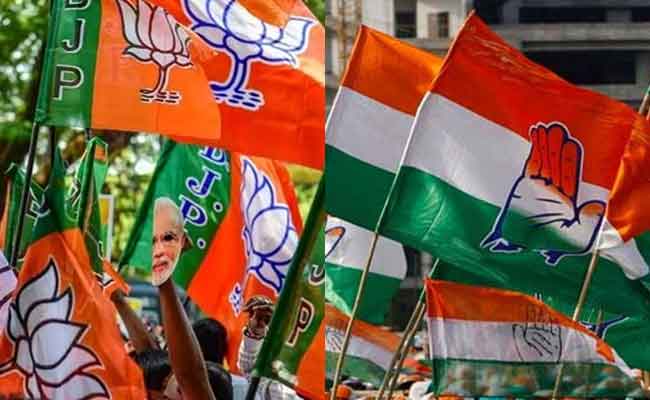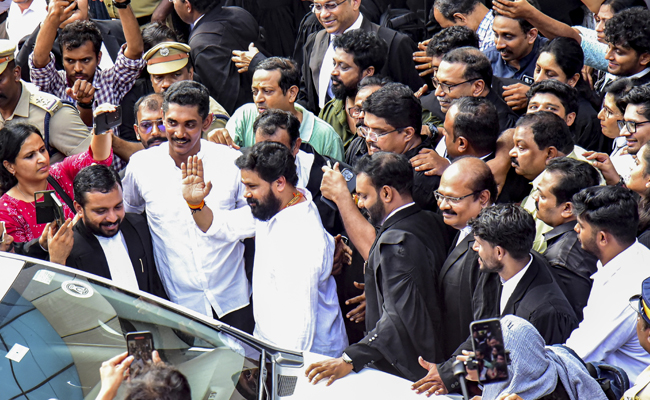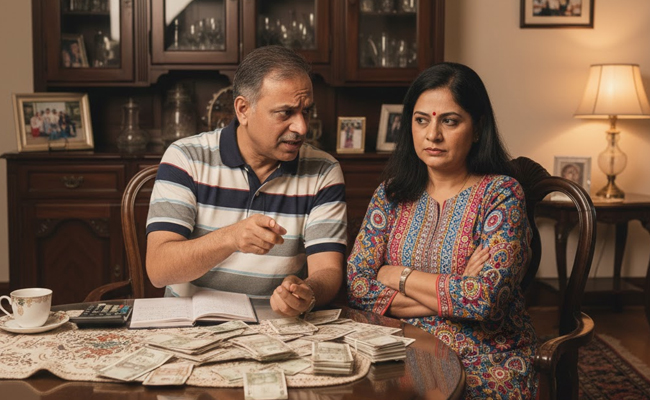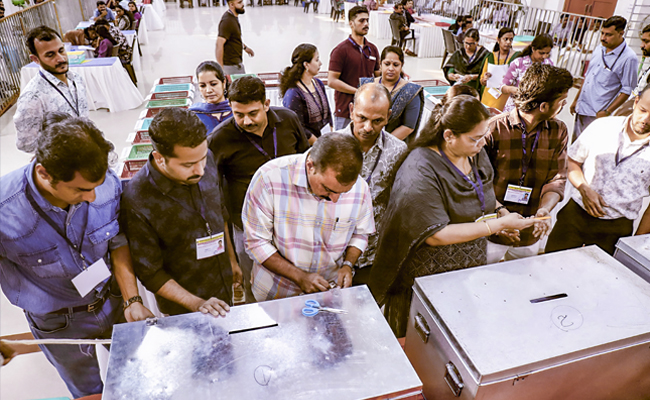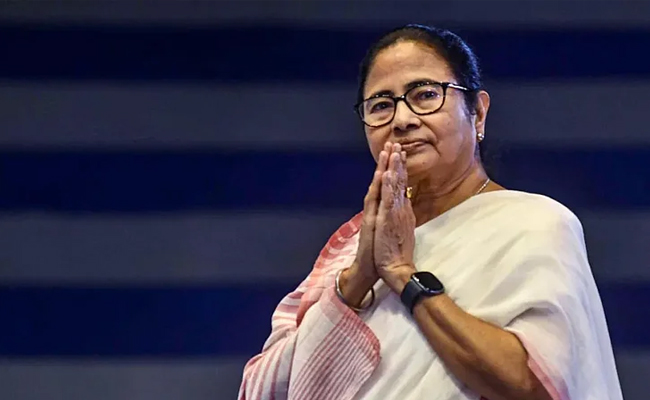Ahmedabad (PTI): Political parties may claim that the caste arithmetic does not play a role in candidate selection but analysts say it is still a major factor in Gujarat, even though urbanisation has weakened caste identities in some parts of the state.
In rural areas, however, caste is still a dominant factor, they said.
Patidars constitute 11-12 per cent of Gujarat's 6.5-crore population and Other Backward Classes (OBCs), scattered across many sub-communities including Thakors in north and Kolis in central Gujarat and Saurashtra, constitute around 40 per cent.
The BJP has fielded six Patidars, seven OBCs and three Kolis. The Congress and the AAP, part of the opposition INDIA alliance, have fielded six Patidars, seven OBCs and two Kolis.
Vidyut Joshi, sociologist and former vice-chancellor of Bhavnagar University, told PTI that Gujarat's first four chief ministers were either Brahmin or Vanik.
Patidars entered the political scene after the 70s when Chimanbhai Patel became the chief minister in 1973, he said.
"Caste is an identity. The caste factor is considered in the selection of candidates. It cannot be discarded. Today, caste and class go hand-in-hand. The candidate should be from a well-to-do background along with being from a specific caste," Joshi said.
Rural voters prefer candidates from their caste as they feel it becomes easier to approach them for work after the polls, he said.
Political analyst Amit Dholakia said the caste effect is diminishing in central and south Gujarat's urban pockets like Ahmedabad and Vadodara but it is still a dominant factor in rural areas like Saurashtra and north Gujarat.
"Candidates have won from seats where their caste was not dominant. Urbanisation plays an important role in weakening caste identities and bringing forward other issues. In rural areas, particularly Saurashtra and north Gujarat, caste still plays an important role in politics," said Dholakia, a political science professor at the Vadodara-based M S University.
Earlier, candidates directly appealed to people of their caste to vote for them. Now, the appeal revolves either around Hindutva or Prime Minister Narendra Modi's development agenda, he said.
Dholakia further said, "The BJP wants to create a consolidated Hindu vote by blurring caste identities, while the INDIA alliance thinks Hindutva-centric politics can be countered by strengthening caste identities."
One of the main reasons the Congress was defeated in Gujarat was the weakening of caste identities, at least in urban pockets, he claimed.
"Caste is a factor in the selection of candidates, especially in Saurashtra. Patidars are still a force to reckon with but other castes, especially Kshatriyas, are losing dominance. We cannot discard the caste factor but it is getting weak, mainly because of the rise of Hindutva-centric politics," he said.
Rajkot-based political analyst Jagdish Mehta said in Saurashtra and Kutch regions, having eight Lok Sabha seats, caste was not a dominant factor before the 1990s.
The parties used to select candidates known for their work or based on their backgrounds, like heirs of erstwhile rulers, he said.
"Prior to the 80s, majority of the winners in the Saurashtra region belonged to different castes and got elected because of their personal image and social connect. After the BJP's entry, caste suddenly became the most important factor in the selection of candidates," he claimed.
The BJP talks about politics of development but it takes the caste factor into consideration during candidate selection. It is evident that the BJP selects candidates from dominant castes, Mehta further claimed.
"Though a candidate's caste should be the last factor, it has become the main factor now," he added.
Gujarat BJP spokesperson Yamal Vyas, however, doesn't fully agree.
"We don't give a lot of importance to caste. We try to maintain a balance. What matters is a candidate's commitment to the party, ability to win and educational qualification," said Vyas.
Instead of just relying on the caste factor, the BJP undertakes an elaborate "sense exercise" wherein party observers visit every constituency, meet local leaders and poll aspirants to prepare a list of probable candidates, which is then sent to the party leadership for the final announcement, he said.
State Congress spokesperson Manish Doshi said the onus is also on the voters because if they keep rejecting well-qualified and deserving candidates, parties will shift focus to other selection criteria like caste as ultimately victory matters.
"Parties usually keep social engineering in mind while selecting a candidate. The Congress also takes into consideration educational qualifications, mass connect, ability to understand local issues and popularity (of a candidate)," he said, citing Congress' Banaskantha candidate Geniben Thakor and Rajkot candidate Paresh Dhanani as examples.
"Ultimately, our selection is based on the choice of voters. We have seen in the past how candidates like T N Seshan lost, some struggled to save deposits, and how non-corrupt and upright former government officers lost polls. This creates pressure on parties to look for winnability, not quality of candidates," said Doshi.
In the 1999 Lok Sabha polls, Congress nominee and former chief election commissioner Seshan, credited with transforming the Election Commission in the 1990s, lost to BJP veteran L K Advani from Gandhinagar Lok Sabha seat.
Let the Truth be known. If you read VB and like VB, please be a VB Supporter and Help us deliver the Truth to one and all.
Kochi (PTI): The prosecution had "miserably" failed to prove the conspiracy charge against Dileep in the sensational 2017 actress sexual assault case, a local court has observed while citing inconsistencies and lack of sufficient evidence against the Malayalam star.
The full judgement of Ernakulam District and Principal Sessions Court Judge Honey M Varghese was released late on Friday, and has revealed the judge also pointing out at unsustainable arguments put forth by the prosecution.
"The prosecution miserably failed to prove the conspiracy between accused No.1 (Pulsar Suni) and accused No.8 (Dileep) in executing the offence against the victim," the court held.
It examined in detail, the prosecution's allegation that Dileep had hired the prime accused to sexually assault the survivor and record visuals, including close-up footage of a gold ring she was wearing, to establish her identity.
On page 1130 of the judgment, under paragraph 703, the court framed the issue as whether the prosecution's contention that NS Sunil (Pulsar Suni) recorded visuals of the gold ring worn by the victim at the time of the occurrence, so as to clearly disclose her identity, was sustainable.
The prosecution contended Dileep and Suni had planned the recording so that the actress' identity would be unmistakable, with the video of the gold ring intended to convince Dileep that the visuals were genuine.
However, the court noted that this contention was not stated in the first charge sheet and was introduced only in the second one.
As part of this claim, a gold ring was seized after the victim produced it before the police.
The court observed that multiple statements of the victim were recorded from February 18, 2017, following the incident, and that she first raised allegations against Dileep only on June 3, 2017.
Even on that day, nothing was mentioned about filming of the ring as claimed by the prosecution, the court said.
The prosecution failed to explain why the victim did not disclose this fact at the earliest available opportunities.
It further noted that although the victim had viewed the sexual assault visuals twice, she did not mention any specific recording of the gold ring on those occasions, which remained unexplained.
The court also examined the approvers' statements.
One approver told the magistrate that Dileep had instructed Pulsar Suni to record the victim's wedding ring.
The court observed that no such wedding ring was available with her at that time.
During the trial, the approver changed his version, the court said.
The Special Public Prosecutor put a leading question to the approver on whether Dileep had instructed the recording of the ring, after which he deposed that the instruction was to record it to prove the victim's identity.
The court observed that the approver changed his account to corroborate the victim's evidence.
When the same question was put to another approver, he repeated the claim during the trial but admitted he had never stated this fact before the investigating officer.
The court noted that the second approver even went to the extent of claiming Dileep had instructed the execution of the crime as the victim's engagement was over.
This showed that the evidence of the second approver regarding the shooting of the ring was untrue, as her engagement had taken place after the crime.
The court further observed that the visuals themselves clearly revealed the victim's identity and that there was no need to capture images of the ring to establish identity.
In paragraph 887, the court examined the alleged motive behind the crime and noted that in the first charge sheet, the prosecution had claimed that accused persons 1 to 6 had kidnapped the victim with the common intention of capturing nude visuals to extort money by threatening to circulate them and there was no mention about Dileep's role in it.
The court also rejected the prosecution's claim that the accused had been planning the assault on Dileep's instructions since 2013, noting that the allegation was not supported by reliable evidence.
It similarly ruled out the claim that Suni attempted to sexually assault the victim in Goa in January 2017, stating that witness statements showed no such misconduct when he served as the driver of the vehicle used by the actress there.
The court also discussed various controversies that followed Dileep's arrest and the evidence relied upon by the prosecution, ultimately finding that the case had not been proved.
Pronouning its verdict on the sensational case on December 8, the court acquitted Dileep and three others.
Later, the court sentenced six accused, including the prime accused Suni, to 20 years' rigorous imprisonment.
The assault on the multilingual actress, after the accused allegedly forced their way into her car and held it under their control for two hours on February 17, 2017, had shocked Kerala.
Pulsar Suni sexually assaulted the actress and video recorded the act with the help of the other convicted persons in the moving car.

